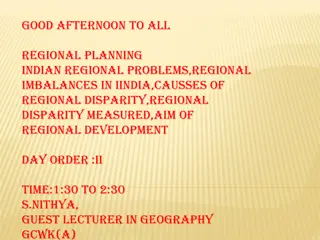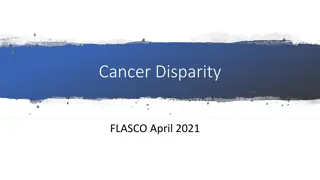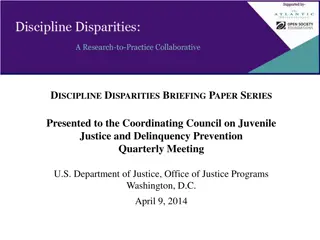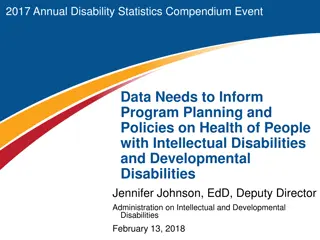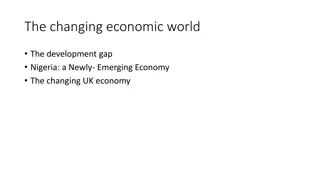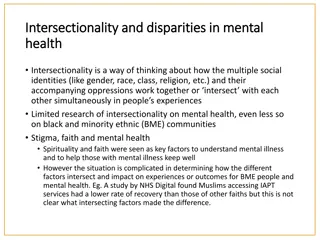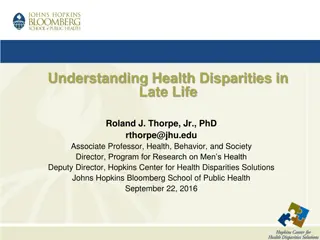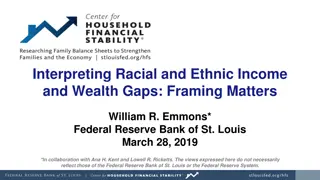Economic Development and Disparities
The concept of economic development, the development gap between rich and poor countries, and key measures like HDI and GNI. Learn about factors impacting quality of life and compare HDI values in Africa and South America to understand regional disparities.
Download Presentation

Please find below an Image/Link to download the presentation.
The content on the website is provided AS IS for your information and personal use only. It may not be sold, licensed, or shared on other websites without obtaining consent from the author.If you encounter any issues during the download, it is possible that the publisher has removed the file from their server.
You are allowed to download the files provided on this website for personal or commercial use, subject to the condition that they are used lawfully. All files are the property of their respective owners.
The content on the website is provided AS IS for your information and personal use only. It may not be sold, licensed, or shared on other websites without obtaining consent from the author.
E N D
Presentation Transcript
The Changing The Changing Economic World Economic World GEOG YOUR MEMORY
Geog Your memory - The Development Gap 16.1 Q1. What is development? Q2. What does HDI and GNI stand for? Q3. What measures are used to produce the HDI for development? Q4. Using Figure 1, describe two factors that could affect quality of life. Q5. Explain the difference between GNI and HDI Figure 1
The Development Gap 16.1 Q1. What is development? The progress of a country in terms of economic growth, the use of technology and human welfare. Q2. What is the development gap? The difference in standards of living and wellbeing between the world s richest and poorest countries (between HICs and LICs). Q3. What does HDI and GNI stand for? HDI = Human Development Index GNI = Gross National Income Q4. What measures are used to produce the HDI for development? Where GDP per capita, life expectancy and adult literacy are combined to give an overview. This combined measure of development uses economic and social indicators to produce an index figure that allows comparison between countries. Q5. Using Figure 1, describe two factors that could affect quality of life. As shown in Figure 1 one factor that could affect quality of life is - The water looks polluted = contaminated water = waterbourne diseases = decrease quality of life - Poor quality of buildings = unstable = decrease quality of life Q6. Explain the difference between GNI and HDI GNI is an economic measure of development and is expressed as per head (per capita) of the population while HDI is a social and economic measure of development and is expressed in values 0-1, where 1 is the highest.
Using the figure above, compare HDI values in Africa and South America.
Using the figure above, compare HDI values in Africa and South America. the vast majority of countries in South America have values above 0.7, whereas most countries in Africa show HDI values under 0.6 the highest figures for HDI are in the extreme north and south of Africa showing values exceeding 0.6. The highest in South America are in the southern part, with values above 0.8. HDI values in South America are generally higher than in Africa
Measuring Development 16.2 Q1. What is infant mortality? Q2. What is death rate? Q2. Is birth rate a reliable measure? Give a reason for your answer. Q3. Identify a limitation of development measures.
Measuring Development 16.2 Q1. What is infant mortality? The average number of babies that die under one year of age, per 1000 live births. Q2. What is death rate? The number of deaths in a year per 1000 of the total population Q2. Is birth rate a reliable measure? Give a reason for your answer. Yes it is a reliable measure as a country develops, women are likely to become educated and want a career rather than staying at home. They marry later and have fewer children. Q3. Identify a limitation of development measures. A single measure of development can give a false picture, as it gives the average for the whole country. Other ideas: - unreliable, out of date data or information was hard to collect.








